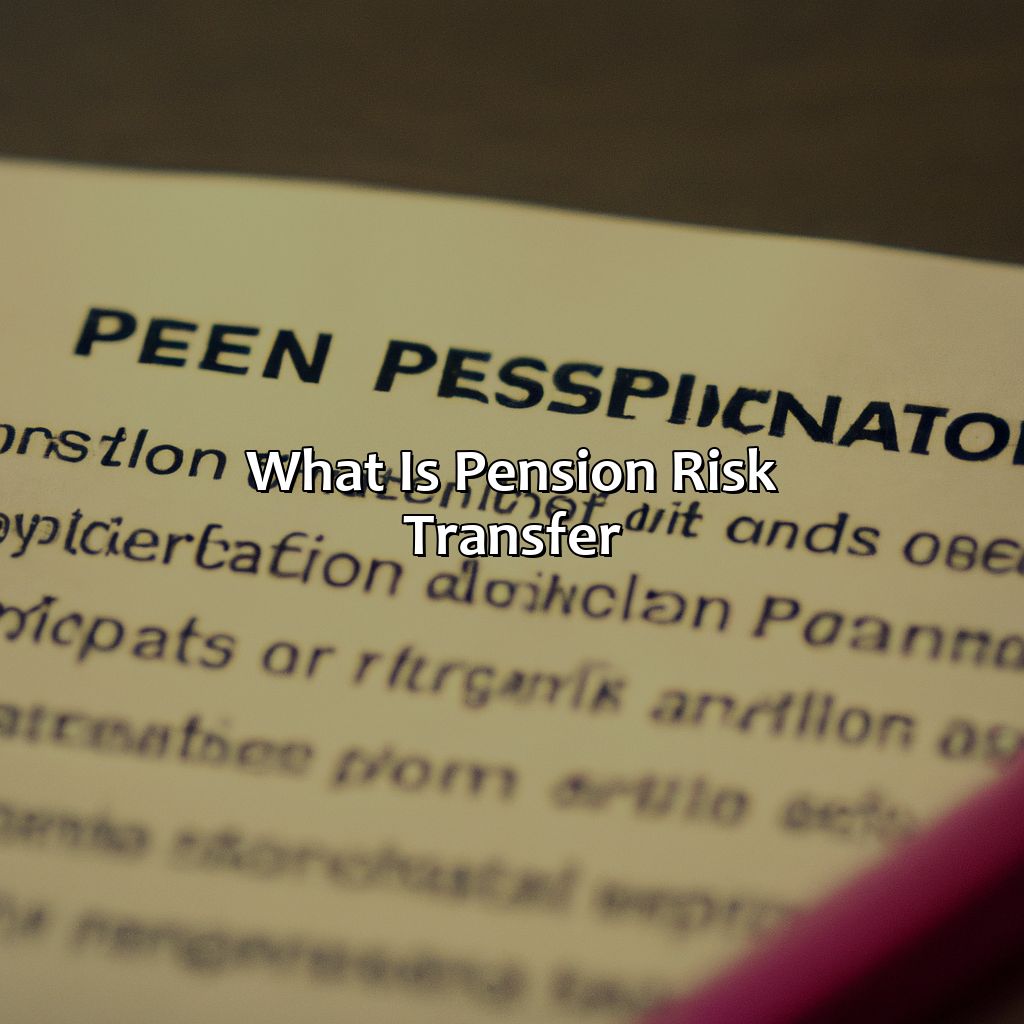What Is Pension Risk Transfer?
Key Takeaway:
- Pension risk transfer refers to the process of transferring pension plan risks from the plan sponsor to an insurer through full or partial pension buyouts or plan terminations.
- The reasons for pension risk transfer include reducing pension plan risks and transferring pension obligations to insurers, which can provide financial security and stability for the plan sponsor and participants.
- The types of pension risk transfer include full pension buyouts, partial pension buyouts, and plan terminations, which offer different levels of risk reduction and financial flexibility for the plan sponsor.
Are you unsure about pension risk transfer and how it works? This article will provide you with an essential understanding of what it is and how it can help protect your future. With the right knowledge, you can take control of your pension and secure your financial future.
Definition of Pension Risk Transfer
Pension Risk Transfer refers to the transfer of risk and liabilities associated with a company’s pension plan to an insurance company. This enables the company to transfer the cost and administration of its pension plan, thereby reducing the risk and financial burden on the company. By doing so, the insurance company becomes responsible for the payment of future pension benefits to the plan’s beneficiaries. Pension Risk Transfer is also referred to as Pension De-Risking or Buyout.
In addition to reducing risk, Pension Risk Transfer provides a guaranteed stream of income for the plan’s beneficiaries that is backed by the insurance company. This ensures that the beneficiaries will receive their pension benefits even if the company goes bankrupt. How is a pension paid out? Pension Risk Transfer has become increasingly popular among companies that are looking to reduce their pension liabilities and focus on their core business operations.
According to a report by Willis Towers Watson, the global Pension Risk Transfer market is expected to reach $1.3 trillion by 2025. This growth is being driven by an aging population and increased regulatory scrutiny around pension plan funding levels.
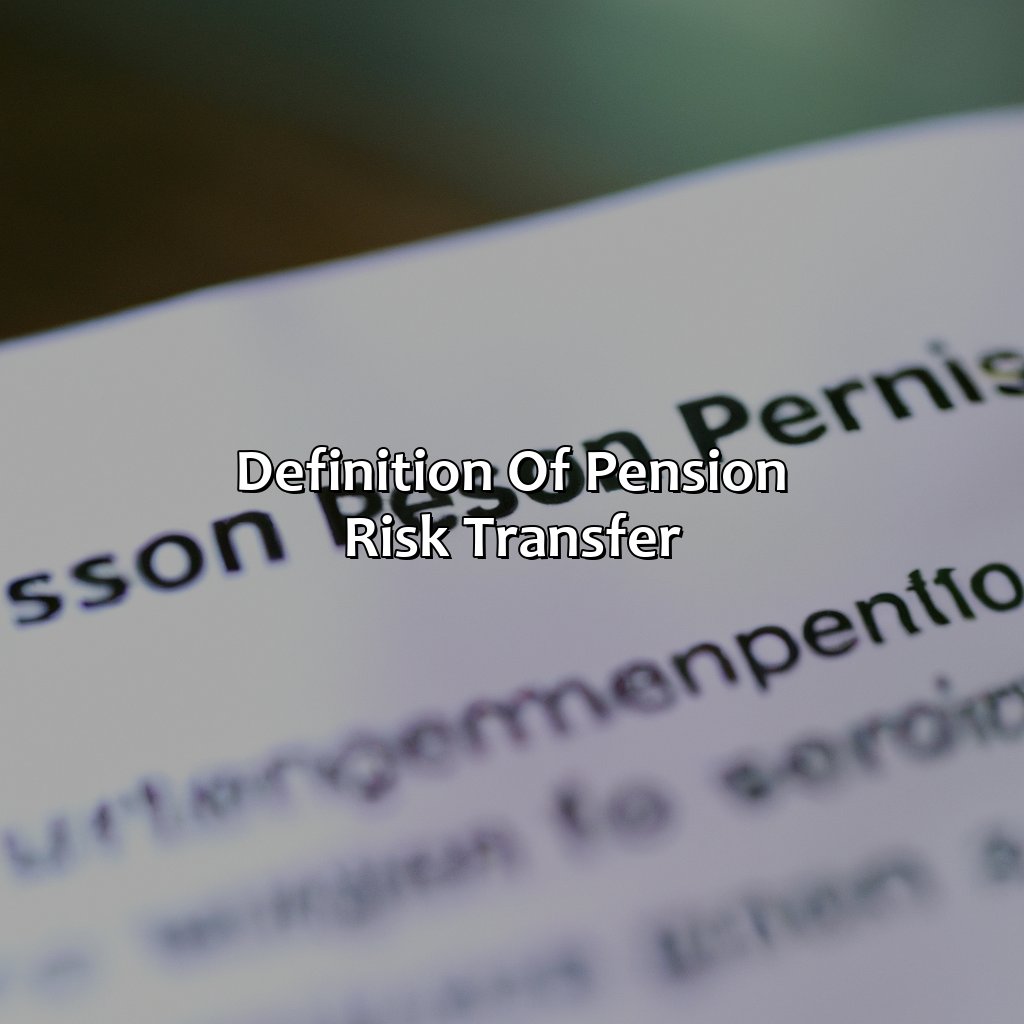
Image credits: retiregenz.com by Joel Arnold
Reasons for Pension Risk Transfer
Why is pension risk transfer necessary? Let’s explore the reasons! Two main sub-sections provide solutions for protecting your pensions. These are:
- Reducing pension plan risks
- Transferring pension obligations to insurers
Mitigating risks and transferring obligations to financial institutions are key to protecting your pensions.
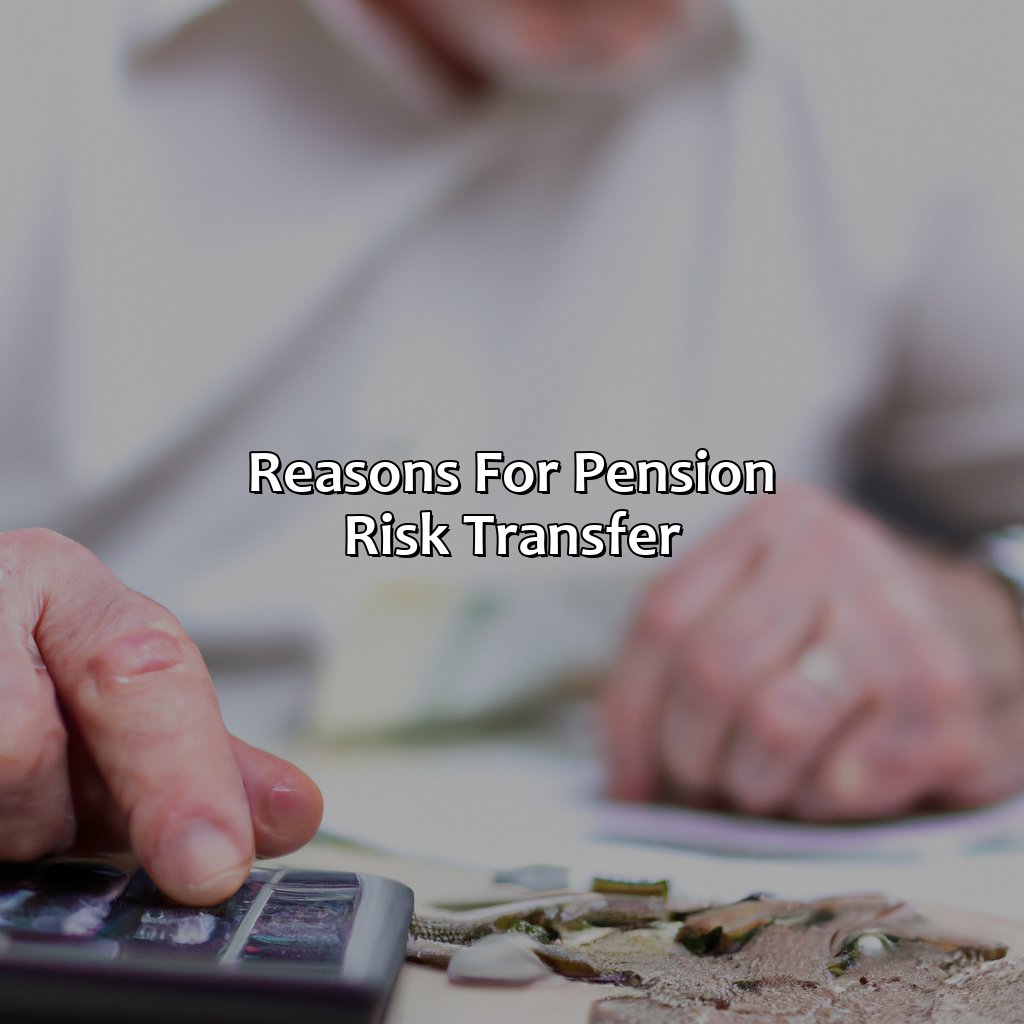
Image credits: retiregenz.com by David Woodhock
Reducing Pension Plan Risks
Minimizing the potential Pension Plan exposures is a critical aspect of risk management. Agents globally have been investigating approaches to mitigate such risks through a recent trend, namely, Pension Risk Transfer (PRT). PRT aids in reducing the overall funding burden for plan sponsors while providing participants with lifetime income security. An efficient PRT may also enable employers to spend less time on administrative activities and focus more on their core business activities.
An insurance company can curtail a pension scheme’s exposure risk by acquiring some or all of the liabilities associated with it through PRT. Employers want to shift the scheme’s liability due to various factors, including the increasing reliability on government legislation, both economically and politically. The addition of new retirees and beneficiaries brings further complexities which often require increased resources, staff overheads, and reliance upon financial markets which are unstable.
Research carried out by Metlife in America highlighted that 41% of surveyed workers considered “guaranteed lifelong source” as their most desired retirement benefit. Old-age provisions such as social security in the United States do not provide enough support to cover material costs following retirement. Consequently, employees seeking post-work stability by relying upon a stable Pension Plan will contemplate various means of transferring their risk.
Transferring your pension obligations to insurers is like putting your retirement dreams in a box and shipping it off to a stranger.
Transferring Pension Obligations to Insurers
The process of transferring pension obligations to insurers is called Pension Risk Transfer. This technique involves transferring the responsibility of providing retirement benefits from the plan sponsor to an insurance company. This method is utilized by companies to reduce their liability and minimize future costs associated with pension plans.
Pension Risk Transfer enables companies to offload the long-term risk associated with managing pensions, including investment risk, longevity risk, and interest rate risk. Once transferred, the insurer assumes responsibility for managing the assets and liabilities associated with the pension plan. Companies can benefit from this arrangement as it allows them to focus on core business functions rather than worrying about managing employee retirement benefits.
\nIt is important to note that commuted value of pension plays a major role in pension risk transfer.
It’s critical to consider Pension Risk Transfer options as regulations change, resulting in higher funding requirements for defined benefit plans. Due to market volatility or economic downturns, pension plans may face significant funding shortfalls that could threaten a company’s financial stability. Failing to take action in such situations could lead to costly penalties, decreased shareholder value and even bankruptcy.
Transferring pension risk can be like playing hot potato, but with financial stability instead of a potato.
Types of Pension Risk Transfer
Looking for pension risk transfer options? This section covers types of pension risk transfer. Options include full pension buyouts, partial pension buyouts, and plan terminations. Pick the best fit for your pension plan!
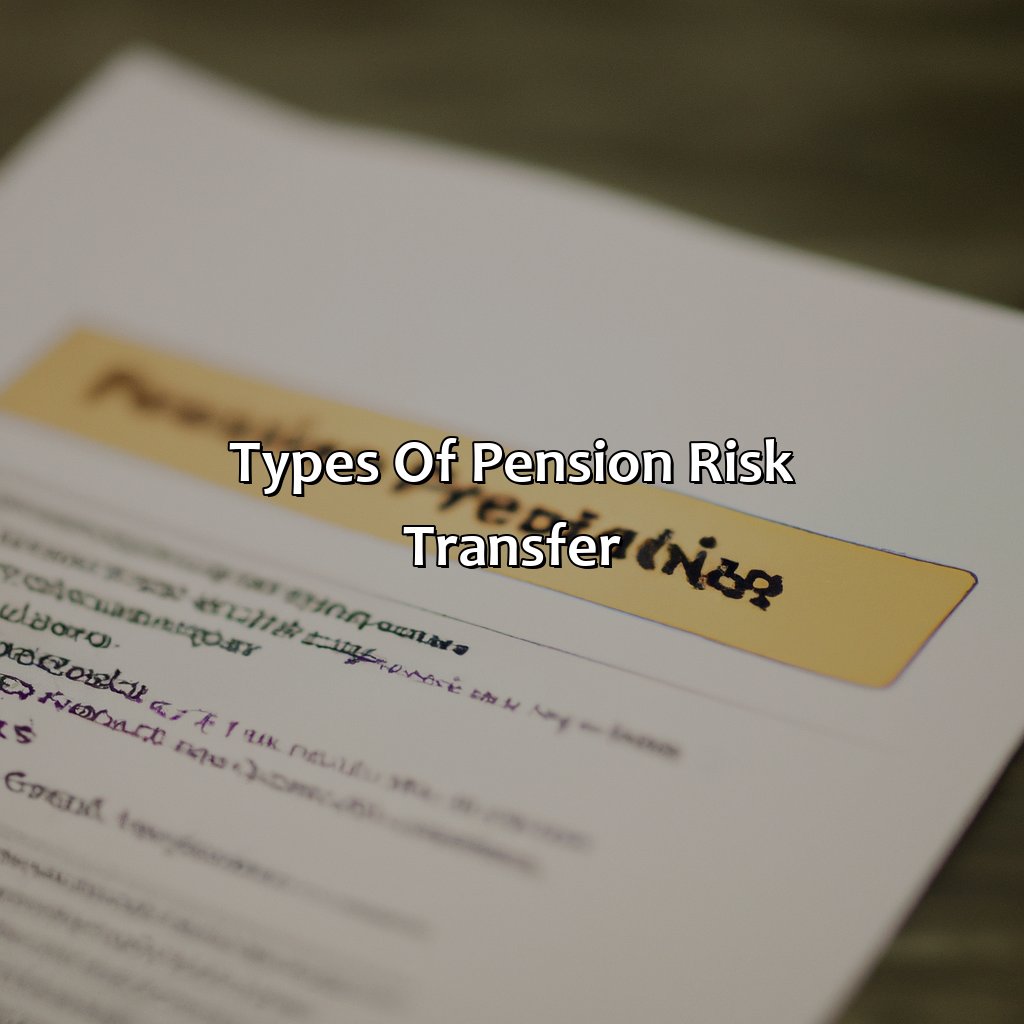
Image credits: retiregenz.com by Harry Arnold
Full Pension Buyouts
A complete takeover of the pension fund by an insurance company is known as the full pension buyout. This option is suitable for companies that want to transfer all their pension liabilities to a third party. The process involves settling all pensions owed to employees, who would henceforth receive payments directly from the insurance firm.
Full pension buyouts are ideal for companies looking to reduce long-term risks associated with their employees’ pensions. By transferring all liabilities to an insurer, they can eliminate the uncertainties of future payouts due to changing market conditions and increased life expectancy of retirees. Additionally, this option provides financial flexibility by freeing up capital that would have been held in reserve for future obligations. To know more about what is pension debt and how it affects companies and retirees, click here.
It’s important to note that there are significant financial and legal considerations during a full pension buyout, which may affect the decision-making process. A professional advisor should be consulted to provide guidance on suitable options and ensure compliance with regulations.
Given the benefits offered by full pension schemes, employers must consider these options before it’s too late. Failing to act puts their retirement plan at risk and could lead to potential legal concerns down the line. Take action now before time runs out!
Finally, a retirement plan that lets you partially buy out of your possessions, including your co-worker’s annoying stories.
Partial Pension Buyouts
Partial pension buyouts involve transferring a portion of the pension obligation to an insurance company, while still maintaining some pension liabilities in-house. This approach allows sponsors to reduce overall risk exposure and improve overall retirement security for plan participants.
The strategy is commonly used by companies that seek to limit their exposure to potential liability risks due to changes in regulations or volatile markets. By transferring part of their pension obligations, they can significantly reduce the amount of funding required for pensions.
One benefit of this type of pension risk transfer is that it reduces contributions and investment risks while still allowing employers to maintain control over parts of the pension obligation. It also gives employers flexibility as they can adapt to changing situations quickly e.g., market volatility or disruptions such as COVID-19.
Pro Tip: Partial Pension Buyouts can help companies mitigate key risks and fulfill their fiduciary obligations without completely handing over control of the entire employee benefit plan.
Plan terminations are like breaking up with your retirement plan – it’s painful, messy, and you’ll probably have to delete their number from your phone.
Plan Terminations
When a corporate retirement plan reaches the end of its lifespan, it is necessary to address the final distribution of pension assets. This process, known as ‘Pension Plan Termination’, involves settling all liabilities and distributing any surplus assets among participants. The termination can take effect via Complete Termination or Standard Termination. In Complete Termination, assets are distributed to participants, while in Standard Termination, the plan can continue after transferring pension risks to insurance companies.
In a Pension Plan Termination or windup, trustees must meet fiduciary requirements to prudently manage assets and ensure distributions are equitable for all beneficiaries. Employers typically make large contributions on behalf of their employees throughout their working years. Thus they have an obligation to provide timely notice and a valid basis for plan termination. Failure in doing so could result in lawsuits and legal penalties.
A well-known example of Pension Plan Termination was that of Delta Airlines, which froze its pensions plans in 2005 due to bankruptcy filings racking up billions of dollars in obligations that later led to asset allocation transforming into shrunken portfolios being insufficient for funding retirements through traditional pensions.
The pension risk transfer process is like a game of hot potato, except nobody wants to catch the liability.
Pension Risk Transfer Process
To get the hang of Pension Risk Transfer, you must select insurers cautiously, evaluate pension liabilities and negotiate/execute contracts. We’ll look into the 3 main areas:
- Insurer Selection
- Pension Liability Valuation
- Contract Negotiations/Execution
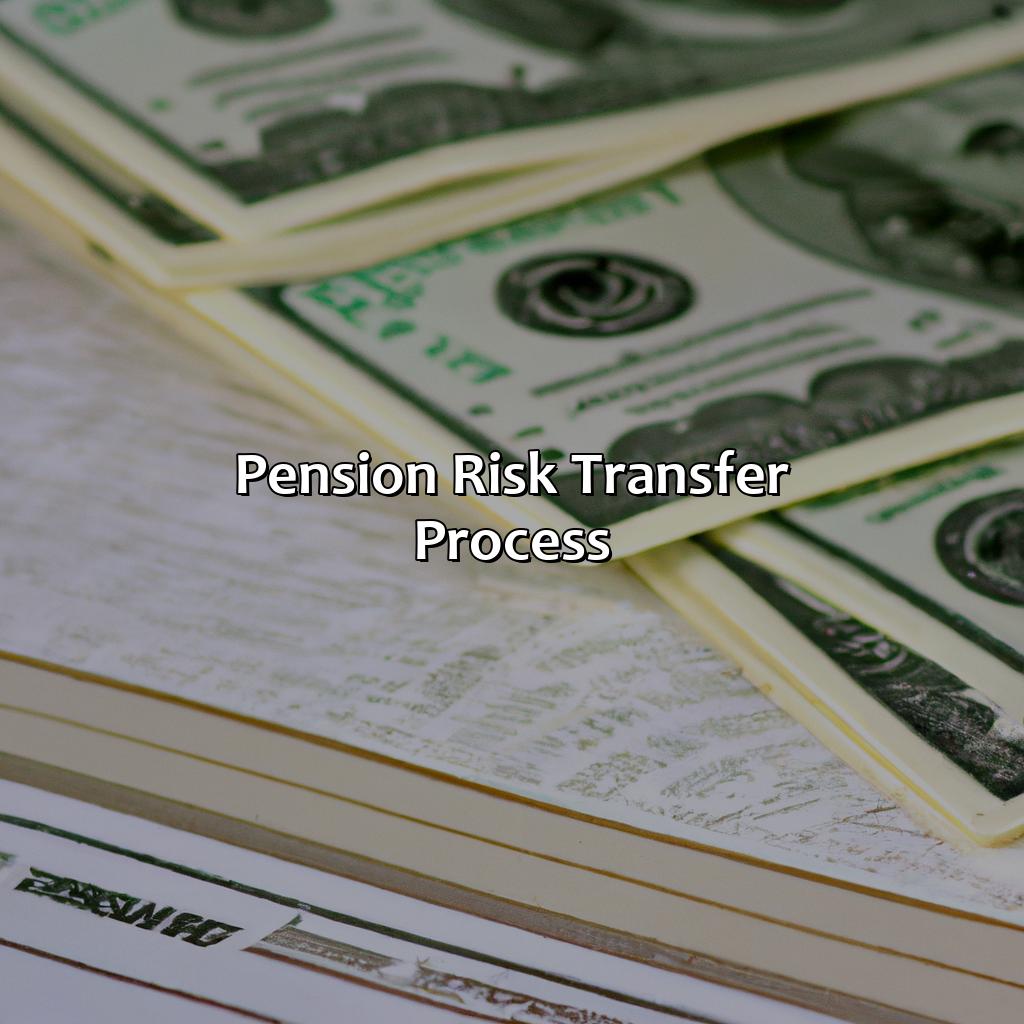
Image credits: retiregenz.com by Yuval Duncun
Selection of Insurers
Insurer Selection for Pension Risk Transfer – How it Works
When looking at pension maximization, selecting the right insurer is crucial. Here are some considerations:
- Financial stability and creditworthiness of the insurer
- A strong track record and experience in pension risk transfer
- Flexibility in structuring the arrangements to meet specific needs
- Capability to implement and administer the agreed upon solutions accurately and efficiently
- Effective communication and transparency throughout the process
- A cost-effective solution that provides value for money
Other factors may also come into play depending on individual circumstances. Working with an experienced advisor helps navigate which insurer is best suited to meet your needs.
Insurer selection is a key part of strategically managing pension risk. It ensures that both parties have a clear understanding of obligations, roles, and responsibilities while offering individuals security through investment protection.
When Rolls-Royce transferred 4.6bn of UK pension liabilities to Legal & General Assurance Society (LGAS) in March 2021, LGAS used innovative ways to remove barriers such as legal novation rules associated with insolvent employers from transferring their defined benefit liabilities insurance providers. This milestone confirmed the growing Pension Risk Transfer market in times where organisations are exploring different opportunities for managing their pension risks.
Calculating the value of pension liabilities is like trying to predict the weather – you never know what kind of storm is coming.
Valuation of Pension Liabilities
The calculation of the obligations a company owes to its employees through pension plans is known as Pension Liability Valuation. The amount is estimated based on several factors, like the average employee s salary, their years of service and the expected interest rates. This assessment provides an understanding of what companies have accumulated on behalf of their employees and how they plan to fulfill that obligation going forward.
A Valuation of Pension Liabilities table includes four columns: Plan Name, Effective Date, Plan Obligation, and Fair Market Value (FMV) Assets. For instance, XYZ Corp s 401(k) plan effective date was January 1st, 2020. The calculated Plan obligations are $100 million with FMV assets at $85 million.
It’s essential to remember that many things can affect a pension’s calculations because various factors should be considered for precise estimations. This serves as a mechanism for making decisions regarding pensions’ funding levels and assessing them against future expectations.
According to Investopedia, companies that offer employer-sponsored retirement plans must disclose funded statuses in annual financial statements according to Generally Accepted Accounting Principles (GAAP).
In summary, every company offering pension schemes needs to calculate their Pension Liability Valuation accurately. It plays a vital role in determining the benefit entitlements for employees and helps ensure companies effectively fund those obligations over time.
Why negotiate when you can just sign on the dotted line and hope for the best? Just kidding, please negotiate.
Contract Negotiation and Execution
The stage of agreement discussions and fulfillment is a crucial part of the Pension Risk Transfer Process. This involves the negotiation and finalizing of terms and conditions relevant to the transfer. This ensures that both parties, i.e., the insurer, and pension trustees agree upon essential details before executing the deal. It includes reviewing legal documents such as policies, financial reports, service level agreements, etc.
It is necessary to have every detail in place to prevent any disputes or inconsistencies later. When a contract is agreed upon by both parties involved in where pension money comes from, it is executed explicitly to verify each of its clauses.
Learn more about pension risk transfer.
Once contract negotiations are finalized after rigorous discussions and agreement documents are approved by the respective stakeholders authenticated through signatures if an issue arises post settlement, they can be settled legally through these documents that have been agreed upon between the two parties earlier.
In 2018 for example; US Investment-grade corporations shifted $26 billion worth pension liabilities in 100 transactions to insurers thereby transferring their liabilities and responsibilities from managing their pensions over-shifted towards insurers.
Why take the risk when you can just transfer it? But be warned, the grass isn’t always greener on the other side of your pension plan.
Advantages and Disadvantages of Pension Risk Transfer
Gain clarity on pension risk transfer? Explore its pros and cons. Check out the benefits. Consider potential drawbacks too. This way, you can make an informed decision about whether it’s right for you. Look into advantages and disadvantages. Then decide.
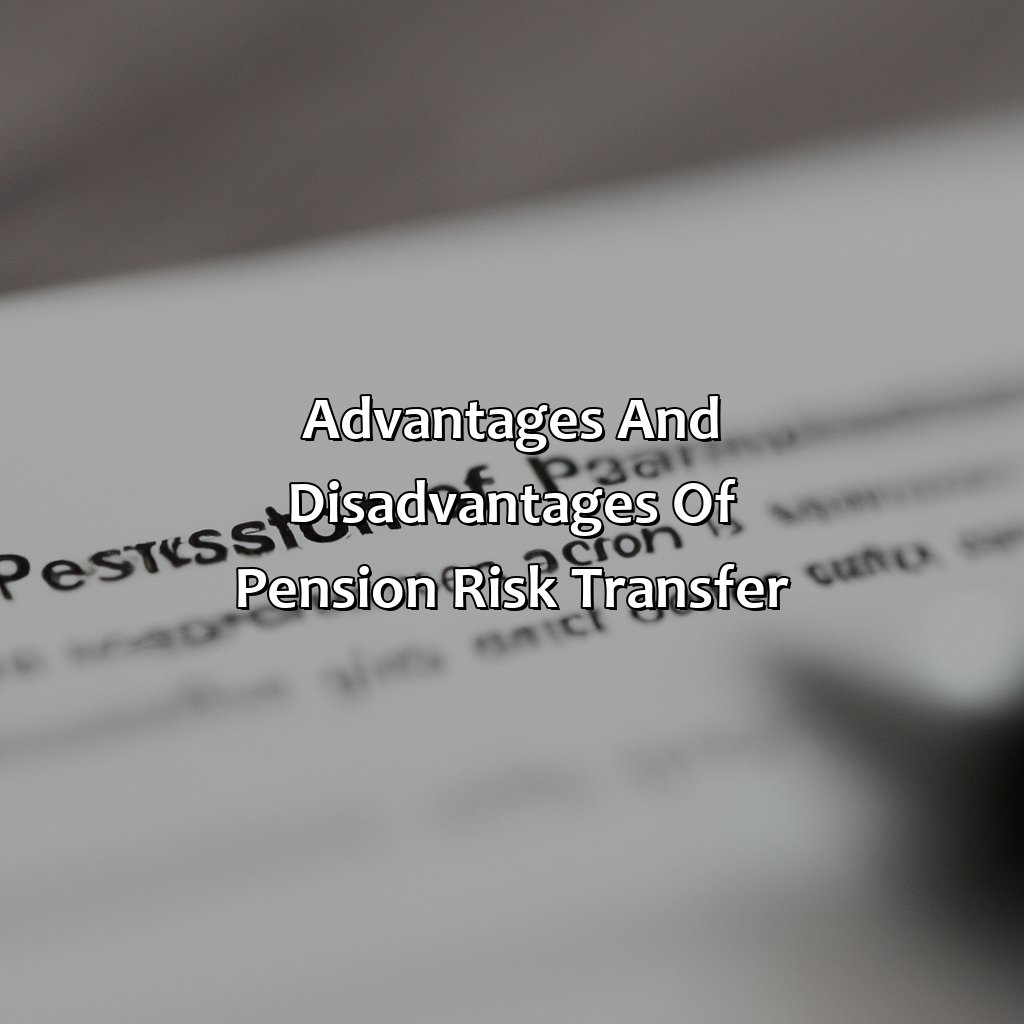
Image credits: retiregenz.com by David Arnold
Advantages
In a pension risk transfer, several benefits are provided to the company.
- It frees up capital that can then be invested into the business rather than being tied up in pensions.
- Companies can transfer the longevity risk to an insurance company, which is beneficial for them as they no longer have to worry about how long their pensioners will live.
- Finally, it allows companies to focus more on their core operations, having outsourced one of their important liabilities.
It is important to note that pension risk transfer may not be suitable for every company or pension scheme. Factors such as scheme size and funding levels can affect whether this strategy is appropriate or not. In addition, some companies may find the costs associated with pension risk transfers prohibitive.
A notable example of successful pension risk transfer occurred between Tata Steel UK and Prudential UK in 2017 where Tata offloaded more than 4bn of retirement annuity liabilities. This enabled Tata Steel UK to continue its operations without worrying about the long-term financial health of its employees’ pensions.
I guess transferring your pension risk means you’re just taking a gamble that you won’t live long enough to regret it.
Disadvantages
Pension Risk Transfer has several detriments that organizations should consider before opting for it. These downsides can have significant implications on their pension plans and long-term financial goals.
- Pension deficits: Upon transferring the risk, companies transfer their pension plan’s liabilities to insurance companies and pay a premium. However, the cost of the premium may exceed the transferred liabilities, resulting in higher pension deficits.
- Inflation Risks: Many pension schemes offer inflation protection. Still, insurers often don’t provide that option or charge an additional fee for such policies. This leads to increased inflation risks on transferred funds.
- Reduced flexibility: Transferring risks means surrendering control over investment decisions and fund management, making it challenging to react to dynamic market indicators.
- Costs Involved: While Pension Risk Transfer eliminates individual risks, it comes with its own set of costs, such as insurer fees and administrative expenses incurred during the transfer process.
- Tax Implications: Once a company transfers its pension responsibility, employees may see changes in tax benefits associated with their pensions. New tax provisions or rates may apply to them after the transfer.
- Projected yields might not meet expectations as they rely on economic forecasting which inherently involves uncertainties.
Understanding these challenges is crucial while weighing options for Pension Risk Transfer. As every company’s situation varies with different advantages and disadvantages specific to their context.
However, factors like changes in interest rates can offset some of these risks and reduce overall costs involved in Pension Risk Transfer deal than running internal programs.
It’s essential to note that the Pension Insurance Corporation (PIC) regulates Pension Risk Transfers, covered transactions up to 6 bn last year alone!
Being a pension plan sponsor is like being a parent- you try to provide for your children’s future, but you can never guarantee that they’ll turn out successful.
Considerations for Pension Plan Sponsors
For your pension plan, you need to examine the funding status, competitive scene, and financial freedom. Factors to keep future benefits must be considered for the funding status. To get the desired results, comprehending the competitive landscape is essential. Possessing financial flexibility can help you stay away from debt issues. These parts will help you comprehend the considerations involved in pension risk transfer.

Image credits: retiregenz.com by David Arnold
Funding Status
Assessing Pensions’ Financial Status
Pension plans’ financial status is critical to evaluate their funding adequacy. Here’s a breakdown of the funded ratio, assets, and liabilities for pension plans in the US:
| Indicator | Value |
| Funded Ratio | 91% |
| Total Assets | $4.24 trillion |
| Total Liabilities | $4.67 trillion |
Without adequately funded pensions, employees may rely on social welfare programs or struggle to afford retirement after leaving their job.
To ensure proper financial management of pensions, plan sponsors must regularly assess their plan’s funding status and address any funding gaps promptly.
Don’t miss out on protecting the pension benefits promised to your employees. Ensure your pension fund is adequately funded today! It’s a dog-eat-dog world in the pension industry, but with the right pension risk transfer strategy, you can fetch some impressive results.
Competitive Landscape
The market scenario in the pension plan industry is known as the “competitive outlook.” This landscape determines the environment and surroundings in which companies operate. It plays a crucial role in evaluating business strengths and weaknesses, identifying potential opportunities, and analyzing risks that pose a threat to a company’s growth.
| Company | Market Position | Product/Service Offerings |
| Prudential | 1 | Pension risk transfer, annuities, insurance policies |
| MetLife | 2 | Annuities, group benefits, life insurance products |
| AIG | 3 | Institutional retirement plans, mutual funds, annuities. |
While analyzing the competitive landscape of pension plans’ service providers, factors such as customer needs and preferences, current market trends, existing competition are considered.
Pension fund sponsors considering transferring their pension risk see an array of providers that have continuously shaped this market for decades. Understanding how a pension loan works and how these providers’ products compare and differ is vital to ensure optimal outcomes from pension risk transfers.
A multinational corporation’s CEO decided to transfer its company’s pension obligations worth $450M to an insurance company using a large group annuity buyout. The deal makes it one of the largest transactions in the US-PRT (Pension Risk Transfer) business sector. The transfer will provide numerous advantages including reducing financial volatility associated with fluctuations in future liabilities or taxes linked to pensions.
Having financial flexibility is like having a secret stash of snacks – it may not seem necessary until you’re stranded without any other options.
Financial Flexibility
The ability to maneuver financially is paramount to pension plan sponsors. It is crucial to have the flexibility to make adjustments with investments and funding requirements. This financial flexibility plays a significant role in managing retirement benefits for participants while maintaining operational duties of the sponsor.
Pension risk transfer can provide an avenue for sponsors to achieve financial flexibility. With this strategy, the management of future benefit payments for plan participants can be transferred to another party (insurer). The sponsor would pay a premium, and the insurer would undertake the responsibility of providing future pension benefits instead. This could present an opportunity for sponsors to free up capital previously earmarked as pension liabilities, making it available for other expenses.
One essential advantage of pension risk transfer that has not been covered is minimizing risks associated with underfunded pensions. Sponsors having difficulty meeting their funding obligations due to declining asset performance, or unexpected liabilities could transfer risk by buying an annuity from an insurer. After transferring these risks, the sponsor could continue operating with more confidence and stability without worrying about underfunded pensions. If you want to learn more about different pension plans, including the pay as you go pension plan, check out our website.
A manufacturing company that decided on pension risk transfer secured its employees’ retirement benefits by outsourcing its pension obligations and freeing up $2 billion from its balance sheet. The company used this sum effectively in several avenues like investing in plant operations and returning cash to shareholders through dividends and share buybacks.
Five Facts About Pension Risk Transfer:
- ✅ Pension risk transfer is the process of shifting the financial risks associated with a pension plan from the plan sponsor to an insurance company. (Source: Investopedia)
- ✅ The most common form of pension risk transfer is through the purchase of annuities that guarantee payment of future benefits to pension plan participants. (Source: Society of Actuaries)
- ✅ Pension risk transfer can help pension plan sponsors reduce their pension liabilities and improve their financial stability. (Source: Plan Sponsor)
- ✅ Pension risk transfer can also provide pension plan participants with greater security and protection of their retirement benefits. (Source: Benefits Canada)
- ✅ Pension risk transfer is a complex process that involves various legal, financial, and actuarial considerations, and requires careful planning and execution. (Source: Mercer)
FAQs about What Is Pension Risk Transfer?
What is pension risk transfer?
Pension risk transfer refers to the process of transferring some or all of the risks associated with a defined benefit pension plan from the plan sponsor to an insurer. This allows the plan sponsor to shift the responsibility of providing retirement benefits to its employees to the insurer, which assumes the investment and longevity risks.
What are the benefits of pension risk transfer?
Pension risk transfer can offer several benefits to a plan sponsor, including reducing the company’s risk exposure and freeing up capital for other uses. It can also provide retirees with greater financial security, as they are no longer relying on the financial health of the plan sponsor for their retirement income.
How does pension risk transfer work?
To transfer pension risk, the plan sponsor purchases a group annuity contract from an insurer, which promises to make periodic payments to plan participants in exchange for a premium payment. The insurer assumes all of the investment and longevity risks associated with the plan, while the plan sponsor retains responsibility for plan administration.
Who is eligible for pension risk transfer?
Pension risk transfer is typically available to plan sponsors with defined benefit pension plans. The eligibility for pension risk transfer may vary based on factors such as the size of the plan, the funding status of the plan, and the demographics of plan participants.
What are some types of pension risk transfer?
There are several types of pension risk transfer, including full, partial, and phased transfers. A full transfer involves transferring all of the plan’s liabilities to an insurer, while a partial transfer involves transferring only a portion of the plan’s liabilities. A phased transfer involves transferring liabilities over a period of time.
What are the risks of pension risk transfer?
While pension risk transfer can offer benefits to both plan sponsors and participants, it also carries some risks. For example, the insurer may not be able to meet its obligations to plan participants, which could result in reduced benefits or default. Plan sponsors may also experience increased costs associated with transferring the plan, such as termination fees and administrative costs.
